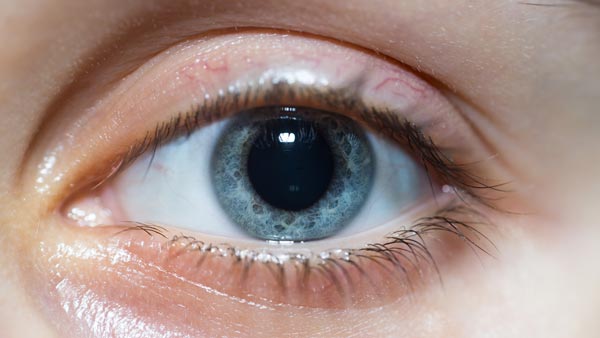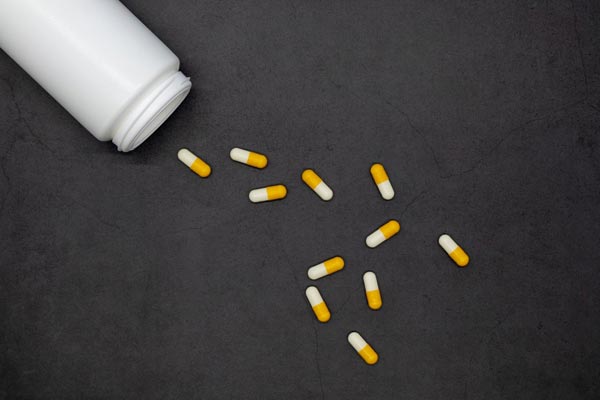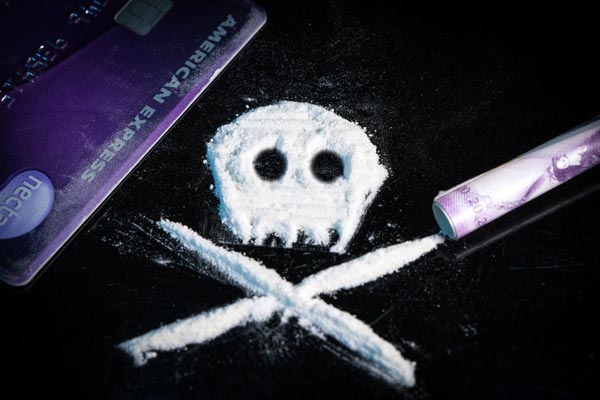Table of Contents
Key Points
- Normally, pupils dilate in response to darkness and other external factors.
- Not all drugs cause your pupils to dilate.
- The most common drugs that produce this effect are hallucinogens, stimulants, and prescription drugs.
- Dilated pupils are often accompanied by other effects, such as slurred speech or confusion.
Dilated pupils, also known as mydriasis, are a common sign of drug use. Your pupils naturally dilate in response to various external stimuli, but certain drugs can change this reaction.
Pupil Dilation & Illicit Substances
Pupils dilate when reacting to changes in light, fixation, or external stimuli.[1] When you’re in a dark room, your pupils dilate to let more light in. This enhances your sight and allows you to pick out subtle visual details. These fibers make up the dilator muscle in the eye.
The autonomic nervous system (ANS) is responsible for these automatic reactions. The ANS has two branches: the parasympathetic and sympathetic nervous systems. Parasympathetic is the rest and digest portion, while the sympathetic is the fight or flight portion. The ANS is involuntary and works automatically, which is why we don’t have much control over the dilation of our pupils.
Certain illicit drugs cause pupil dilation by affecting the ANS. Stimulants such as methamphetamine and crack cocaine are prime examples. They inhibit the reuptake of norepinephrine, a neurotransmitter, increasing the amount of norepinephrine in the synapse and increasing the pupil size. Norepinephrine is similar to adrenaline in that it stimulates the sympathetic nervous system.
Hallucinogens like LSD and MDMA affect serotonin receptors in the brain, which can impact pupil size. Other drugs prevent the pupil from constricting, leading to dilation. This can make it difficult to see in bright environments. Drug-induced pupil dilation is influenced by the amount of the drug taken, individual responses, and environmental conditions.
 What Drugs Cause Dilated Pupils?
What Drugs Cause Dilated Pupils?
Certain drugs are more likely to dilate pupils than others. It depends on how the drug affects the nervous system. It may also depend on how a drug is taken.
Stimulants
Stimulant drugs have a powerful impact on the central nervous system (CNS). Common examples include cocaine, amphetamines, and meth. Meth makes the brain produce more dopamine, which causes euphoria, dilated pupils, and aggressive behavior.
Stimulants make people more alert and energetic. They can also cause mood changes, anxiety, and paranoia.
Prescription Amphetamines
Adderall is a common example of a prescription amphetamine that is used to treat ADHD. When abused, it causes a powerful high. Amphetamines increase the release and inhibit the reuptake of norepinephrine and dopamine. This causes heightened arousal and increased alertness.
The activation of the sympathetic nervous system causes the dilation of the pupil. Other examples of prescription amphetamines include Desoyxn® and Vyvanse®. Illicit amphetamines include amphetamine sulfate (speed) and methamphetamine (meth).
Cocaine
Cocaine is a potent illegal stimulant known for its psychoactive effects. It inhibits the uptake of norepinephrine, which causes dilated pupils.[2] The excess of this neurotransmitter activates the dilator muscle in the eye. The drug also blocks the reuptake of dopamine and serotonin in the brain.
The dose, purity of the drug, and individual factors can affect the drug’s effects. Individual factors include body composition and frequency of use.
Hallucinogens & Psychoactives
LSD (Acid)
LSD is a powerful hallucinogen in the form of a tab that dissolves on the tongue. It forces the CNS into a state of hyperarousal. The pupils will dilate as a response to this arousal. Hallucinations, paranoia, mood changes, and anxiety are also common effects.
MDMA (Ecstasy)
MDMA works similarly to cocaine, though its effects may be more powerful. It causes an excess of norepinephrine, dopamine, and serotonin. This swarm of neurotransmitters causes the pupils to dilate. Though it has hallucinogen effects, it is also a stimulant.
Cannabinoids
THC is the main psychoactive compound in cannabis. It also causes red, dry eyes, euphoria, and mood changes. THC is lipid soluble, making it easy for its effects to persist for long periods. Its pupillary effects may differ depending on how it is consumed and how much is consumed.
Opiates
Opiates include heroin, morphine, methadone, and oxycodone. Taking prescription opioids as prescribed is unlikely to cause any pupil changes. However, when misusing them, the drugs may cause pinpoint pupils, meaning tiny pupils. Misuse includes snorting, smoking, or injecting the drug. Taking the drug this way releases its entire dose at once, causing euphoria, arousal of the nervous system, and pinpoint pupils.
Heroin
Heroin is a very powerful and highly illegal opioid. It is usually injected, which causes an immediate high. The drug will enact its effects as soon as it binds to opioid receptors in the brain. Pupillary constriction can last several hours, and irregular eye movements (nystagmus) may result.
Barbiturates and Benzodiazepines
These drugs are often prescribed to treat anxiety, insomnia, and panic disorders. Taking them as prescribed won’t do much to your pupils, but abusing them causes euphoria, intense relaxation, and pupil dilation or constriction. However, pupil dilation is rare in those who abuse these drugs.
It is more likely among those who abuse the drugs in very high concentrations. Overdose and other dangerous effects are likely because of how these drugs slow the nervous system.
Other illicit drugs
Methylenedioxypyrovalerone (MDPV)
This drug inhibits the reuptake of norepinephrine and dopamine. The accumulation of these neurotransmitters leads to pupil dilation and euphoria. This drug makes the pupils minimally reactive to light, even when exposed to very bright lights.
Phencyclidine (PCP)
PCP is a hallucinogen that intensely arouses the CNS and causes pupil dilation. It is a common recreational drug that can also cause violent behavior and sensory changes. Those who use it may see, hear, feel, or taste things that aren’t there. It also acts as an anesthetic.
Substance Abuse Treatment
Drugs that affect the pupils are dangerous for various reasons. Many cause ocular disease and injury, some of which may be permanent.[3] Substance abuse treatment can help prevent these issues. Individualized intensive programs are tailored to every patient so they get the therapy and support they need. Partial hospitalization and intensive outpatient programs are similar and involve many hours of weekly therapy.
These programs are ideal for those with serious long-term addictions. A standard outpatient program and mental health treatments are best for those not yet too deep into their addictions. They are also great for management and prevention. These programs use cognitive behavioral, art, family, and individual therapy. These treatments can give you the mental skills to overcome your substance use problems.
Frequently Asked Questions
Below are some of the most frequently asked questions regarding these two medications.
The Heights Treatment Editorial Guidelines
There is a vast amount of misinformation online especially as it relates to health & wellness. We have made it our mission at The Heights Treatment to provide accurate, medically sound content that has been medically reviewed by a doctorate level clinician so that you can trust the information contained within our website.




